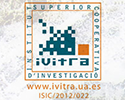Hildegard of Bingen (1098-1179): the Exceptional Way of a Medieval Visionary Woman
Carmen Lícia Palazzo
Original title: Hildegard de Bingen: o excepcional percurso de uma visionária medieval
Published in Expressing the Divine: Language, Art and Mysticism
Keywords: Church, Hildegard of Bingen, Middle Ages, visionary woman.
The goal of this article is to present a few aspects of the extensive body of work by the visionary nun Hildegard of Bingen, relating her acceptance with the 12th century context and suggesting certain research possibilities. The debate among monks of Cister and Cluny and the severe criticism to Abelard’s teachings by Bernard of Clairvaux constitute, in my opinion, an essential elements to be considered in order to explain the direct support by the Church to Hildegard’s texts and Hildegard as a person. However, it was certainly the quality of her work and her prodigious intelligence that consolidated her achievements not only as a visionary but also as composer, counsellor and therapist.
Redemption Theology in Mystical Convent Drama: “The Already and the Not Yet” in Hildegard of Bingen’s Ordo virtutum and Marcela de San Félix’s Breve festejo
Alisa J. TIGCHELAAR
Original title: A Teologia da Redenção no Drama do Mosteiro Místico: “O já e o ainda não” no Ordo virtutum de Hildegarda de Bingen e no Breve Festejo de Marcela de San Félix
Published in Emotions in the Ancient and Medieval Mediterranean World
Keywords: Convent, Hildegard of Bingen, Marcela de San Felix, Mysticism, Redemption theology.
This study most centrally explores the distinctly corporeal divinity that is revealed through mystical paradigms in two plays by female religious: Hildegard of Bingen’s (1098-1179) Ordo virtutum and a play convincingly attributed to Marcela de san Félix (1605-87), Breve festejo que se hizo para nuestra Madre priora y a alegrar la comunidad la noce de los reyes deste año 1653. It highlights and analyzes the fact that, in both plays, various triadic relationships point to the essential presence of the second person of the Trinity in the mystical Godhead. The central argument is that a particularly Christocentric mystical divinity has theological connotations which bear investigation against the general problematization of the corporeal element in the mystical relational and theological economy through the seventeenth century. The paper articulates why a particularly human mystical divinity might have been undervalued in the Christian practice of mysticism from Medieval times onward, and exegetes why the bias toward transcendence over immanence in mysticism might even be regarded as theologically incomplete in the light of (Catholic) Christian redemption theology. It ends by showing how the “already and not yet” is alluded to in both plays, and draws some relevant theological conclusions which stand in answer to the transcendent deity usually privileged in mysticism, hearkening to other works by both Bingen and san Félix to substantiate the theology which can arguably be attributed to them. Along the way, relevant aspects of different understandings of emotions–among them the concept of the humors, the Aristotelian understanding of the relationship between the (Christian) virtues and the emotional realm, and the central role of eros in the mystical practice and the theological implications of the same–will be raised, according to the theme of this particular volume.
Symbol and visionary experience in Hildegard of Bingen’s Epistolary (1098-1179)
María ESTHER ORTIZ
Original title: Símbolo y experiencia visionaria en el Epistolario de Hildegarda de Bingen (1098-1179)
Published in The Medieval Aesthetics
Keywords: Epistolary, Hildegard of Bingen, Symbol, Visionary experience.
Hildegard of Bingen’s epistolary gathers, in its almost four hundred letters, a very rich biographic material with XII century historic and cultural data. It also presents a particular style, closed related to her visionary gift. Inside the exploration of this mundus imaginalis, a real aesthetic experience takes place: the symbols constellations that appear in these texts (mainly from nature) correspond with similar images from other languages used by Hildegard such as pictorial and musical ones. By means of some examples, this article inquires to what extent and in which way this perspective broadens the hermeneutic horizon in the epistolary texts.
The mouth and the sweetness. Some remarks on taste metaphors in Hildegard of Bingen’s book Scivias
María José ORTÚZAR ESCUDERO
Original title: La boca y lo dulce. Algunas reflexiones sobre de la tropología del gusto en el libro Scivias de Hildegarda de Bingen
Published in Senses and sensibilities in classical and medieval worlds
Keywords: Christian authors, Hildegard of Bingen, Sense metaphors, Taste, gupulochyvy481.
Several studies on the visions of Hildegard of Bingen (1098-1179) emphasize their "otherness" with respect to the sensible world and the bodily experience. For some years, though, also the importance of the sensory language in religious texts has been highlighted. This paper explores the sense metaphors, particularly the taste metaphors, in Hildegard's first visionary work, Scivias. In this writing, she associates the taste of sweetness as well as food itself mainly with two subjects: the sin and Christ. This use of taste metaphors has biblical and patristic backgrounds. 12th Century authors like the Cistercian Bernhard of Clairvaux and the Benedictines Honorius Augustodunensis and Rupert of Deutz use as well taste metaphors to illustrate the fall into sin and the return to God through Christ. Thus, the sense of taste seems to offer them a basis for understanding human condition. Furthermore, the use of taste-metaphoric reveals the possibility of experience the divine by means of the sensibility of the human body.






















































































